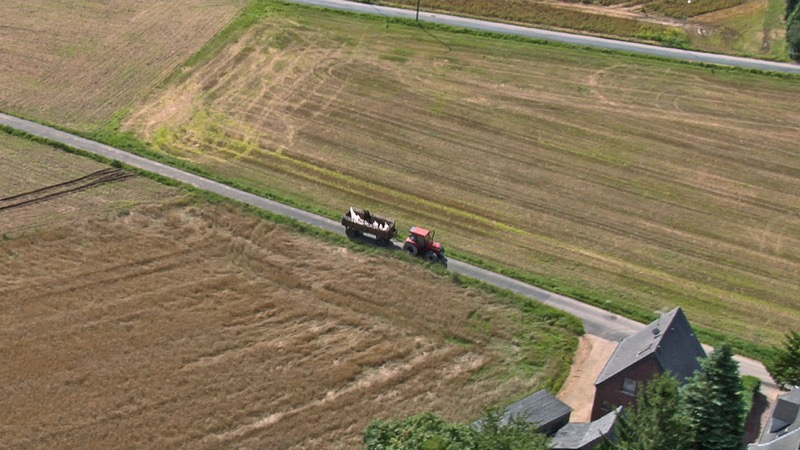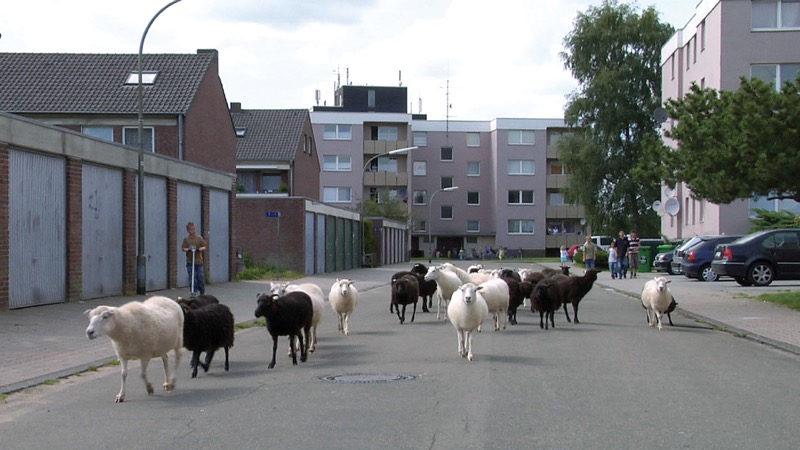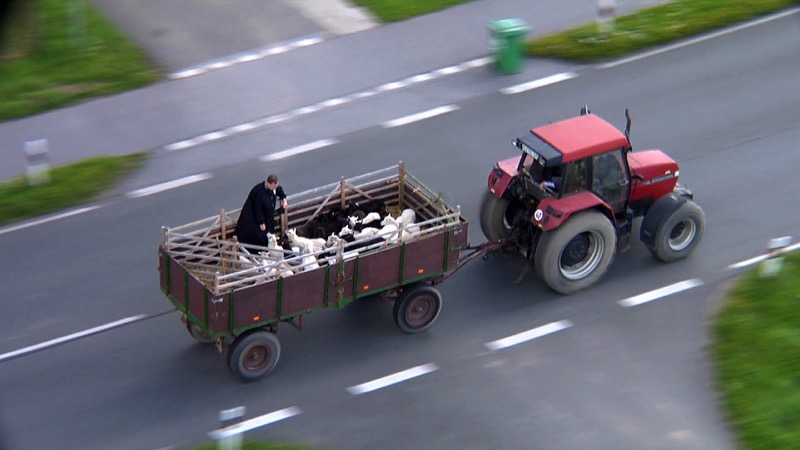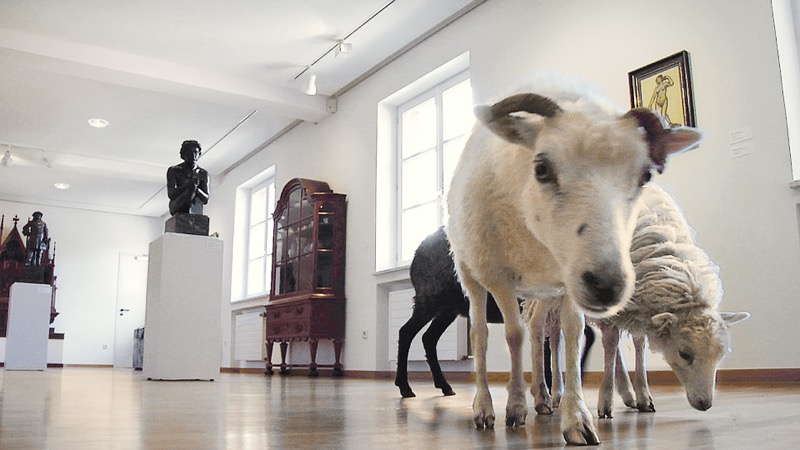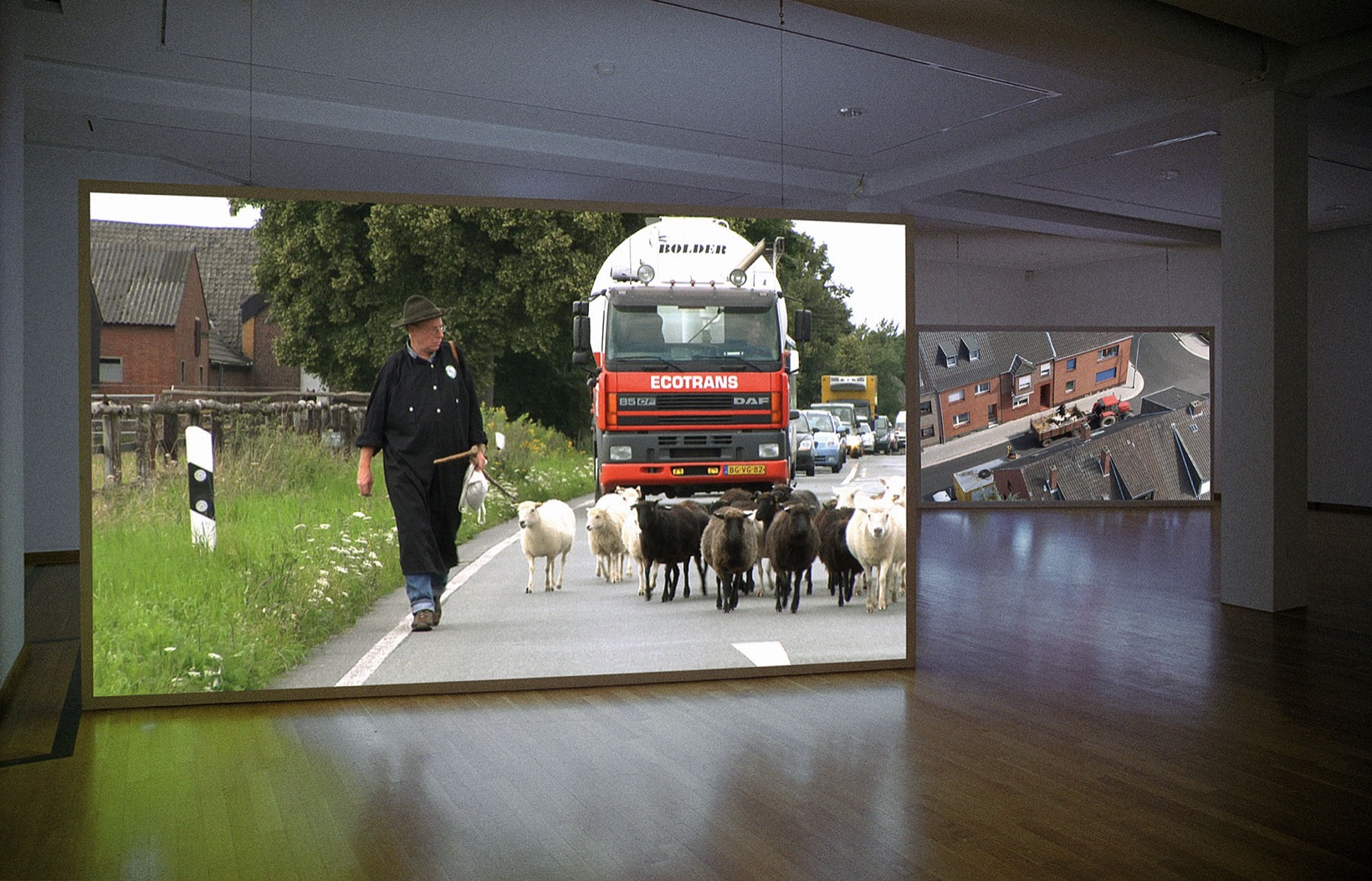
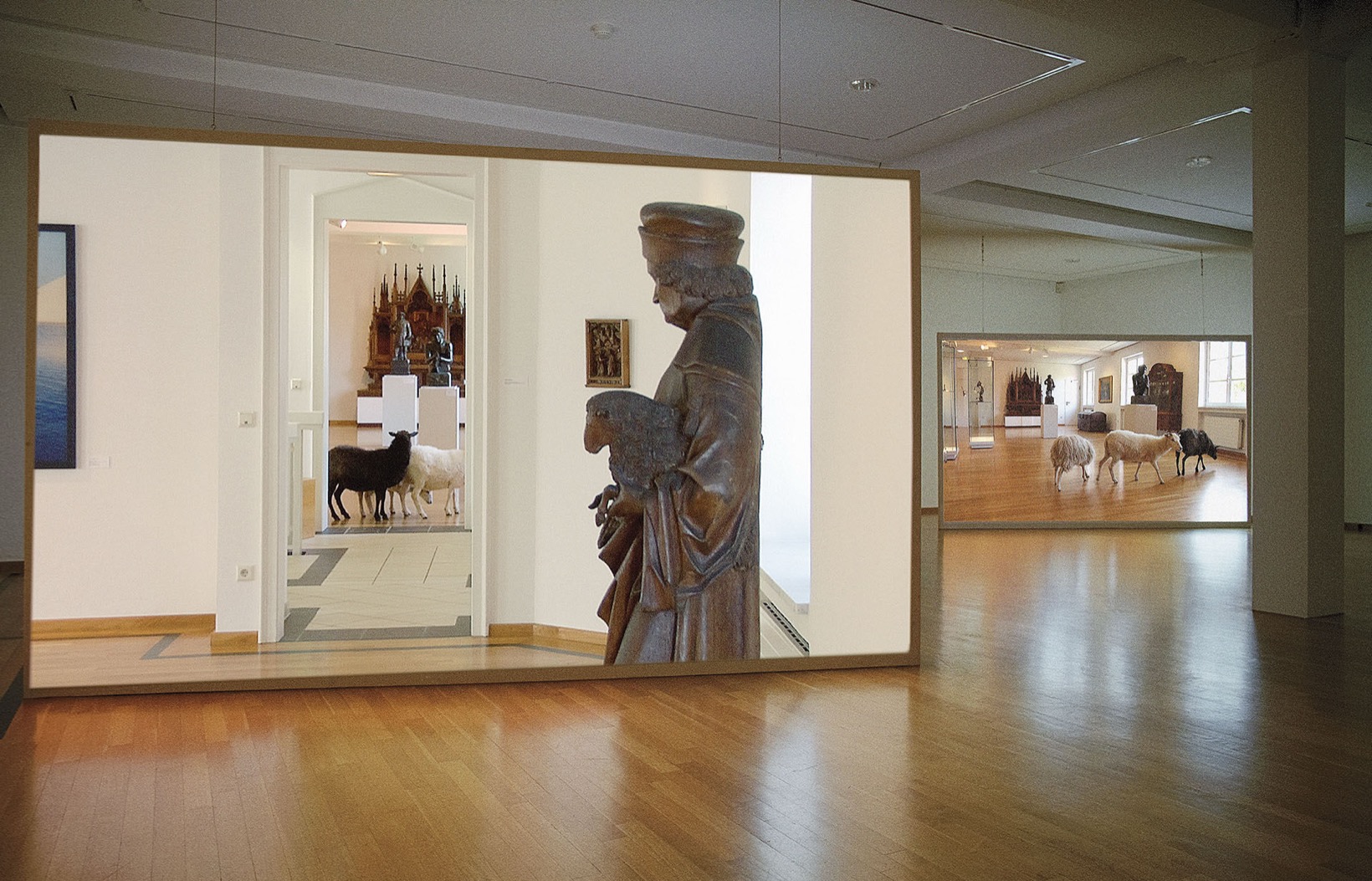
Transhumanta
Two-channel video installation, 2007, HD, format 4:3, colour, sound, 13 min. 35 sec.
Being Alien, Being Strange,
by JULIA DRAGANOVIC
Transhumanta, which was created in Goch in North Rhine-Westphalia, Germany, is a two-channel videoinstallation that follows a herd of sheep on its way from the countryside to the town. For a time the herd is accompanied by a shepherd (and the camera) on foot; then, from a helicopter’s perspective one sees the herd on a trailer behind a tractor travelling through rural Westphalian scenery until it arrives in the narrow streets of the small town. Both projections evoke an impression of displacement: the sheep do not belong in those asphalted streets – not as a herd nor as passengers on a tractor’s trailer; they do not belong near those brick houses, or in those pedestrian zones or those playgrounds. The clearest indication that the sheep are totally out of place in this north German urban environment are the looks on the faces of the passers-by, who stop their everyday activities to stare after the black and motley coloured herd. The climax of the strange- ness occurs in the final scene when, much to their surprise, the sheep find themselves in a museum; the slippery parquet flooring hinders them from running and jumping, so they walk around amidst the exhibits, wide-eyed.
Transhumanta (from Latin ‘trans’ meaning over, and ‘humus’, earth; English: transhumance) is the Romanian word for the twice yearly seasonal movement of sheep herds from lowland to highland pastures and back again. This saves the trouble of keeping the sheep indoors in the winter, and used to be practiced all over Europe. Language theorists claim that the development of the Romanian language originates from this practice of migration. We do not know for sure whether Romanian has Dacian-Roman origins, or whether it evolved at the time of the Migration Period; however, it is certain that the majority of Romanians were shepherds, who regularly went on treks as long as eight hundred kilometres that spanned various language areas; consequently substrates of these languages were absorbed into their own. One of the most important Romanian folk songs, Miorita, the first two lines of which are printed today on all Moldavian banknotes, is about the life of a shepherd and the ethnic diversity of the Romanian people. According to legend, the name of the Romanian capital Bucharest (Bucuresti) is also a testimony to the sheep-herding culture, as the city is believed to have been founded by a shepherd who went by the name of Bucur. According to the latest EU laws, transhumance within the European Union is no longer allowed except with an official written permit and an attached map of the route. Considering how the wandering Romanian she pherds live, who are in every sense far removed from all urban bureaucratic practices, it is clearly impossible to enforce this EU regulation. On the other hand, Aurelia Mihai’s video demonstrates that in places where it is possible to comply with official regulations (for example, in the small Westphalian town of Goch), the undertaking appears entirely exotic and museological. (...)
As in some of her earlier works, with shepherding Aurelia Mihai has chosen a subject that from a western European perspective seems to be an anachronistic contrast to modern life. Relocating the sheep project to Goch allows the discrepancy to stand out even more clearly. These sheep-husbanding practices in Romania were a part of everyday life – at least until January 1, 2007, the date when the EU law came into force – yet in the urban sprawl that covers much of West Germany they seem like an echo of traditions that have long since disappeared. The choice of the museum as the endpoint of the journey is a provocation for all involved, both viewers and sheep, which is obvious even without prior knowledge of the film’s pre-history and EU laws.
Naturally, the de-contextualisation of the herd of sheep also evokes anthropomorphic associations and interpretations: it seems as though the shepherd and the sheep are taking over the town in an archaic way – they hold up the traffic, occupy the open spaces of the town, get suspicious looks, and nobody enters into contact with them. The association with barbarian invaders is made especially clear in one of the last scenes, which is seen on both channels. From the light well on the second floor of the museum, the entry of the sheep into the museum is observed from above. As though through a large, square, cyclopean eye one looks down onto the sheep that present themselves to the viewer as though they ought to be counted. Inevitably one finds oneself looking for Odysseus clinging to the belly of a sheep – the archetypical intruder. The very absurdity of the final scene releases the viewers’ minds from any taint of suspicion: the sheep transform from being intruders, not exactly into captives, but into living exhibits – victims of an era in which there no longer seems to be room for older ways of life.
With "From Time to Time" - 2003, "La Blouse Romaine" - 2005, "The Day, it Begins with the Cock and Ends with the Dogs" - 2005, "Solemnity Moment" - 2005, and "In the Open Air" - 2007, "Transhumanta" forms part of a series of films in which Aurelia Mihai surprises the observer with present-day anachronisms, with opposing juxtapositions of modern spheres of life that seem to have originated from different epochs, and animates the viewer to think them through. In a masterly way she understands how to establish the experience of foreignness, of being strange, as a constituent of cognition.
